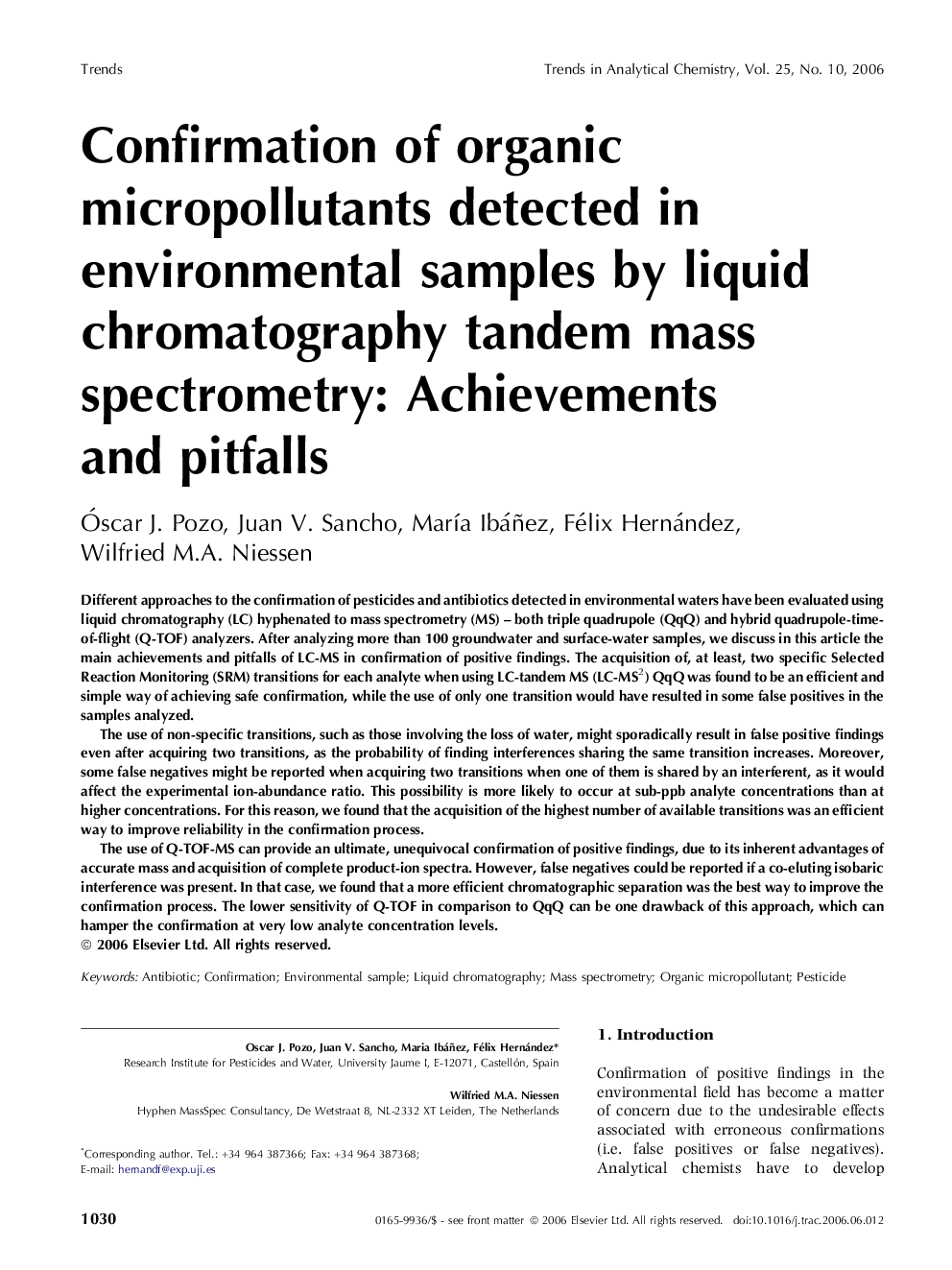| Article ID | Journal | Published Year | Pages | File Type |
|---|---|---|---|---|
| 1248999 | TrAC Trends in Analytical Chemistry | 2006 | 13 Pages |
Different approaches to the confirmation of pesticides and antibiotics detected in environmental waters have been evaluated using liquid chromatography (LC) hyphenated to mass spectrometry (MS) – both triple quadrupole (QqQ) and hybrid quadrupole-time-of-flight (Q-TOF) analyzers. After analyzing more than 100 groundwater and surface-water samples, we discuss in this article the main achievements and pitfalls of LC-MS in confirmation of positive findings. The acquisition of, at least, two specific Selected Reaction Monitoring (SRM) transitions for each analyte when using LC-tandem MS (LC-MS2) QqQ was found to be an efficient and simple way of achieving safe confirmation, while the use of only one transition would have resulted in some false positives in the samples analyzed.The use of non-specific transitions, such as those involving the loss of water, might sporadically result in false positive findings even after acquiring two transitions, as the probability of finding interferences sharing the same transition increases. Moreover, some false negatives might be reported when acquiring two transitions when one of them is shared by an interferent, as it would affect the experimental ion-abundance ratio. This possibility is more likely to occur at sub-ppb analyte concentrations than at higher concentrations. For this reason, we found that the acquisition of the highest number of available transitions was an efficient way to improve reliability in the confirmation process.The use of Q-TOF-MS can provide an ultimate, unequivocal confirmation of positive findings, due to its inherent advantages of accurate mass and acquisition of complete product-ion spectra. However, false negatives could be reported if a co-eluting isobaric interference was present. In that case, we found that a more efficient chromatographic separation was the best way to improve the confirmation process. The lower sensitivity of Q-TOF in comparison to QqQ can be one drawback of this approach, which can hamper the confirmation at very low analyte concentration levels.
